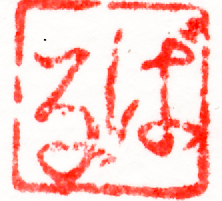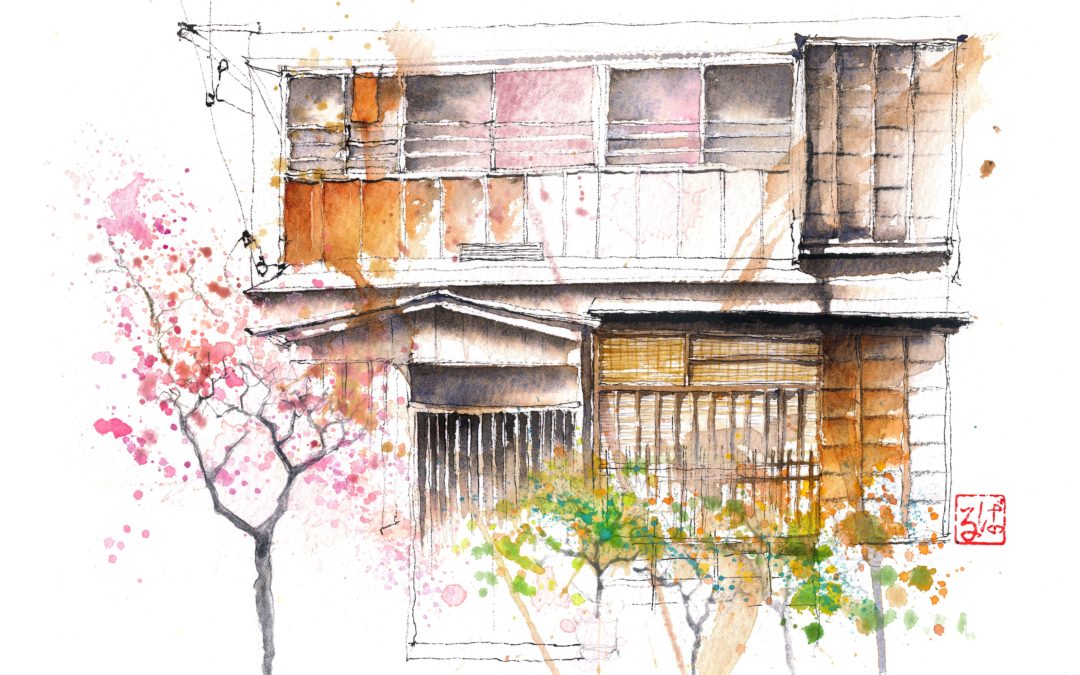It all started with some frustrating bad-looking lines … How do you make your hand put a “good-looking” drawing on the paper when there’s too much to look at ?
As I was learning Yukiko, the japanese violin player I talked about in my previous blogpost, to draw for the first time today, I was struggling in how to explain some observation “tricks” to her, to make the drawing less overwhelming. (she did extremely well, by the way!)
I think Veronica Lawlor resumes it best by saying : “there are no magic tips, techniques or shortcuts to drawing. It’s all about focus and practice, about doing it every day to train your drawing muscles and getting more confident as you go. The truth is you already know how to draw: we all did is as a child. You just have to find it back and unlock it, let it come out.”
It’s like handwriting: by doing it more and more you’ll discover your own style. It’ll also become a special moment of meditation and relaxation.
Drawing, painting, writing: it’s all about focus and practice, and careful observation.
The “tricks” that can help you to improve your drawing skills more effectively are all related to your way of observation and perception of the subject you want to draw.
Just a friendly reminder of the basic perception skills defined by Betty Edwards:
- the perception of edges (seeing where one thing ends and another starts)
- the perception of spaces (seeing what lies beside and beyond)
- the perception of relationships (seeing in perspective and in proportion)
- the perception of light and shadows (seeing things in degrees of values)
- the perception of gestalt (seeing the whole and its parts)

Betty Edwards gives in her book “Drawing from the right side of the brain” some good tricks to learn to observe more carefully and improve your drawing skills.
One very simple trick is to copy an image upside down ! This change in point of view will give you a fresh perspective and eliminate the meaning of the image. It will allow you to observe “like a child” and draw what you see, instead of what you think you see!
Do the test now and copy this portrait upside down:

But when you’re urbansketching you can’t of course turn your subject upside down…
So here’s some other “trick” to keep in mind:
To avoid overwhelm, look at your subject as just “a bunch of lines”
How do you look at the building you want to draw? How do you look at the Musée du Louvre to draw it? If you look at it as the Musée du Louvre with the impressive perspective and sculptures, cold sweat and fear will take over. If you look at it simply as a bunch of lines that you want to suggest on the paper (and so it doesn’t matter really if some of them will be missing), then it starts to be fun. So don’t see the building as a building, and don’t try to draw everything. And also: it doesn’t matter if you drawing isn’t “correct” ! Who cares? If we want to see all the lines and all the sculptures it’s better to take a photograph, isn’t it?
Try different ways also of holding your pencil, brush, pen. Hold it loosely, and not as if you were writing. Draw with your whole arm and body, not just with the tip of your fingers.
To be able to see the building as a bunch of lines, what you have to do is look with your eyes, and not with your brain. Look with your eyes to the lines, to the contours of surfaces and draw them. Don’t look with your brain to the building, windows, chairs, glass or whatever you want to draw. Just look at the edges of the subject and in which direction the lines are going. If you don’t see in which directions the lines are going, make a plastic sheet with a grid on it and look through the plastic sheet. It’s a great help sometimes.
Draw slooooooooowly, line by line. Look carefully (75% of the time to the subject, 25% to the paper). Try not to lift up your pen. Draw and make it grow organically. Pay attention to the direction in which the lines are going and how long they are, how they relate to one another. Try to draw the correct proportions. How wide is the window in comparison to the height? Slow down and look carefully. And put it onto the paper.
And finally: don’t be a perfectionist. You have the permission to experiment and to make lousy, “incorrect” drawings. Who cares if a window or two, three, six, are missing in your drawing? We’re not copy machines. We just make drawings…. There are no bad drawings. Let it go and take risks.
Now stop reading this and get to #werkwerkwerkwerkwerk
Tell me, what are you struggling with most?
Love,
Barbara



What I struggle with the most is to simplify the object and keeping the lines loose. I guess the only way to improve is to practise, practise, practise! 🙂
Great post, thank you!
Yeeees Bibi Indeed
Very interesting. Thanks a lot!
Thank you so much
Great post, and very good tips, especially the one allowing yourself to do bad drawings and not have too high expectations. What has also helped me a lot is seeing the objects as basic shapes, eg houses as cubes and triangles.
Yes thank you so much Satu! It’s true that every complex object can be declined in simple separate shapes ! 😀
Dear Barbara:)
During one month staying at your place and seeing many beautiful sketches there, my perspective on drawings got really different. (I’m embarrassed to say but before I was not able to enjoy seeing paintings because I was thinking I couldn’t fully understand the value of paintings even I visited many museums. Therefore unconsciously created distance and made a limitation on me that sketching and painting are something which I could never reach to the point to understand.)
But after seeing many of your paintings closely everyday at home, I got so much power and inspiration without realizing, and my entire body, nerves got relaxed by catching various colors, gentle lines, lovely object. Those things painted inside are normal conventional scenery or objects, which we usually don’t pay special attention in normal life. But strangely by being sketched by a person, it transforms themselves into something very unique, unequaled and something really attractive.
It was so memorable yesterday to get chance to pick a pencil and brushes. It released me from invisible restriction which I unconsciously created for long years. At first I was struggling with my busy thoughts; “oh I have to sketch everything how the the reality is. Oh what I’m sketching looks not beautiful with random lines.” But I was believing in what Barbara told me initially that “there’s nothing incorrect, don’t let your brain judges what you’re doing.” After a while keeping and insisting sketching, at a certain moment I realized myself that I was just focusing at the present, only observing the direction of each edges of tree, not the whole map, which was really relaxing and giving me similar feelings as if I’m meditating.
We made two sketches and for me it was not easy always to focus at what I’m doing, and find a way how I want to sketch.
By looking at Barbara’s sketch I realized that she must have had many struggles in herself and through many tries and by sketching various things, she established her own current style and still will be continuing looking for beauty.
I will be remembering my first day of sketching and am happy to have my own new notebook which will be getting more other memories inside from now on!
Thank you so much Barbara!❤️
Thank you so much Yukiko for the long testimony! It’s great to read about your experience!
I hope that you’ll continue drawing and share your progress!
You’re a great musician already! Thank you also for your wonderful music 🙂
I hope we can all follow you at least trough videos if the concerts are too far away to go and see live.
xxx
Barbara
Thank you so much for sharing your thoughts, tips and mutual enchantment with music and drawing/painting! So inspiring!
Dear Ofelia,
Thank you so much for your comment ♥️
Thank you so much I really enjoyed this video.
Oh thank you so much for your comment, Sue!
This makes me so happy !!!
I’ve enjoyed this..What a lovely day you both must have had….you give us (viewers) only glimpses of houses but enough to suggest there are more beyond those trees..similar approach to your Brussels in the spring ‘Cherry Blossom’ painting and more. I Love love love
There is that something calming about the pace at which you paint Barbara..so therapeutic
By the way, did you use a pencil or a pen to draw the houses?
Dear Rosella,
thank you so much for your lovely comment!
For the houses I used a fine ballpoint pen 🙂
Kisses from Brussels
Barbara